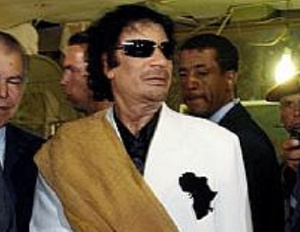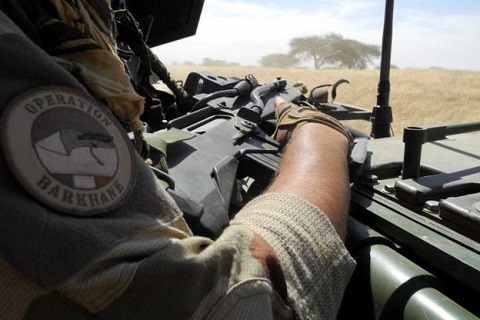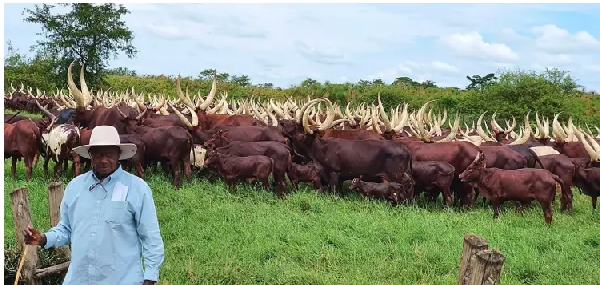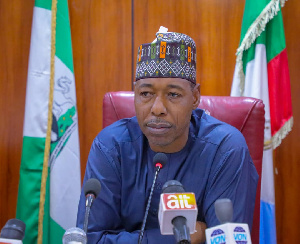FLASHBACK: ‘What did I do to you?’ – Gaddafi’s final words before rebels killed him in 2011

Slain Libyan leader, Muammar Gaddafi, entered the world in 1942, near Sirte. A son of an itinerant Bedouin farmer, Gaddafi was brilliant in School and soon graduated from the University of Libya in 1963.
He graduated from the Libyan military academy in 1965 steadily rising through the ranks.
Unimpressed with King Idrīs’ rule and the dominance of foreign nationals like Italians and Jews in the country, Gaddafi with other officers planned the overthrow of the monarch.
On September 1, 1969, Gaddafi and his men took over the country in a bloodless coup. He was commander-in-chief of the armed forces and chairman of Libya’s new governing body, the Revolutionary Command Council (RCC). He soon formed the Libyan Arab Republic, with the motto “freedom, socialism and unity.”
He moved to remove the U.S. and British military bases from Libya in 1970. By 1973 he had nationalized all foreign-owned petroleum assets in the country, a move western countries never forgave him for. He also outlawed alcoholic beverages and gambling, in accordance with his own strict Islamic principles.
The RCC government initiated a process of directing funds toward providing education, health care and housing for all. Public education in the country became free and primary education compulsory for both sexes.
Medical care became available to the public at no cost, but providing housing for all was a task the RCC government was not able to complete.
Under Gaddafi, per capita income in the country rose to more than US $11,000, the fifth highest in Africa.
Ruling for 42 years until his demise in October 2011, Gaddafi chalked impressive feats to improve the lives of his people.
Per his Green Book, Libyans had to own houses because it was a basic right. The Green Book was his political philosophy, first published in 1975.
Gaddafi’s Libya boasts of one of the best healthcare services in the Middle East and Africa. Education and medical treatments were all free.
Given that Libya is largely a desert, there was need to have a robust irrigation system to sustain life. Gaddafi’s government funded the largest irrigation system in the world-man made rivers to supply water to citizens.
Among others, a bursary was given to mothers with newborn babies, farming encouraged as Libyans who desired to start a farm were given a house, farm land, livestock and seeds for free.
There was free electricity, cheap petrol and state bank which provided loans to citizens at zero percent and then there was no external debt, a rarity for an African state. African states are often saddled with loans with steep interest from the IMF and World Bank.
But crucially, Gaddafi raised the level of education of Libyans from 25% when he emerged as leader to 87% .
But while various leaders met with him including France’s Sarkozy, Britain’s Cameron and America’s Obama, they plotted his overthrow. Sarkozy’s tale is even more curious given he was investigated and charged in France for receiving £42 million in illegal funds for his election campaign.
In early 2011, a civil war broke out in the context of the wider “Arab Spring”. The anti-Gaddafi rebel forces formed a committee named the National Transitional Council on February 27, 2011. It was meant to act as an interim authority in the rebel-controlled areas.
However, the state’s armed force managed to quell the uprising. France and Britain then co-opted Obama into what will become a multinational coalition led by NATO force to essentially go to war against Libya. They needed America for the fire-power.
On March 21, 2011 providing air cover for the rebels on the ground, the offensive began. To put the pressure on Gaddafi, the International Criminal Court issued an arrest warrant against him and his entourage on June 27, 2011. By August 20, 2011, Libya’s capital, Tripoli had fallen in the hands of the rebels with Gaddafi making Sirte the new capital.
With a drone attack from the US and France hitting the convoy attempting to smuggle Gaddafi out of Sirte and smoking a dozen vehicles, a wounded Gaddafi and his immediate agents had to make a dash for a tunnel. It wasn’t long when the rebels following the blood trail came to meet the leader who had evaded capture for months and had grown weary.
On October 20, 2011 when the TC fighters retrieved Gaddafi from the storm drain, bleeding heavily from a deep wound on the left side of his head, from his arm and from other injuries to his neck and torso, he is said to have asked his captors: “What did I do to you?”
Soon Gaddafi’s last moments as captured by a phone show clips of him slumped on a pickup truck, face smeared with blood, shirtless and bloody.
His body was then stored on the floor of a room-sized freezer in Misrata usually used by restaurants and shops to keep perishable goods.
The “What did I do to you?” question from the late leader is poignant. The rebels and their Western backers claimed he was ousted because of abuse of rights of citizens, as well as his long stay in power. Perhaps it is his attempt to introduce a single African currency linked to gold so that he could introduce and only trade in the African gold Dinar which would have thrown the world economy into chaos but freed African nations from debt and poverty.
Today, Libya is in ruins as it’s seen no development since Gaddafi’s fall with Obama acknowledging not having a plan after Gaddafi’s ouster was one of his worst foreign affairs blunders.






